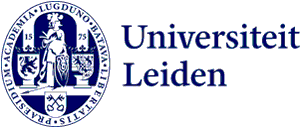
‘If we buy these imported products, we are co-responsible for the global decline in biodiversity’
What we buy and consume in Europe often has an impact on biodiversity somewhere else in the world. With a Horizon Europe Funding of 600.000 euros, assistant professor Laura Scherer and her team will develop models to look at the impact of global trade in non-food biomass. ‘After developing the models, we can look for solutions to protect the biodiversity in the trading process.’
Our consumption of non-food biomass, such as wood, fish for livestock feed, cotton for textiles and biofuel, largely depends on imports from outside of Europe. The production of these products can have a big impact on the local biodiversity. This impact often stays unknown to the countries that buy the products.
That has to change, Scherer says. ‘Trade significantly contributes to biodiversity loss. What we consume here in Europe might affect the biodiversity in the country of origin. It’s important to realise that our environmental impact is not only what we see here in Europe, but it can be anywhere in the world.’
BAMBOO is not about bamboo
That is why the project BAMBOO came into life. ‘BAMBOO stands for “biodiversity and trade: mitigating the impacts of non-food biomass global supply chains”. It’s an acronym, so the project is not really about bamboo,’ Scherer says. ‘We are trying to facilitate a transformative change within global supply chains in order to protect biodiversity.’
It’s important to realise that our environmental impact is not only what we see here in Europe, but it can be anywhere in the world.
In the coming four years, the researchers will develop models to estimate the impact of trade in non-food biomass. ‘Trade practices could even help conserve and restore biodiversity, but it requires better data on trade flows and better biodiversity impact assessment models. This project will give us tools to assess the impact of the products we trade. From there, the next step for us is to find solutions or leverage points on how we could improve the global protection of biodiversity.’
A closer look at cotton and anchovies
Current trade models mostly focus on the trade of food in terms of biomass. One of the project’s goals is to improve these models by adding more detail on non-food biomass. ‘With this trade model, you can see who is responsible for what on a global scale.’
Next to models with a global perspective, Scherer and her research group will take a closer look at two cases: the trade of anchovies from Peru and the export of cotton from Tanzania. ‘Peru exports a lot of these fish as animal feed for livestock, but this can lead to depletion of fish stocks, which would impact the marine ecosystem there. Similar for the cotton in Tanzania. Agricultural production has impact on the environment, for example, through land use, water use for irrigation, and fertilisers that lead to nutrient emissions and pollution. And if we buy these products, we are kind of co-responsible for this.’
Making stakeholders aware
The project will contribute to the EU’s biodiversity strategy for 2030 that aims to protect and restore biodiversity and ecosystems. ‘The European Commission’s trade policy review of last year acknowledged the importance of trade policy and global cooperation for the EU’s sustainability objectives. This also includes biodiversity preservation. Even though biodiversity is essential for the functioning of our ecosystem and human well-being, it is declining rapidly.’
Scherer expects that the project can effectively reduce the impact on biodiversity and ecosystems. ‘That is if stakeholders are made aware of their impact in these global supply chains and receive recommendations and scenarios for reducing this impact. The models we are creating are the first steps towards that.’
Text: Inge van Dijck
